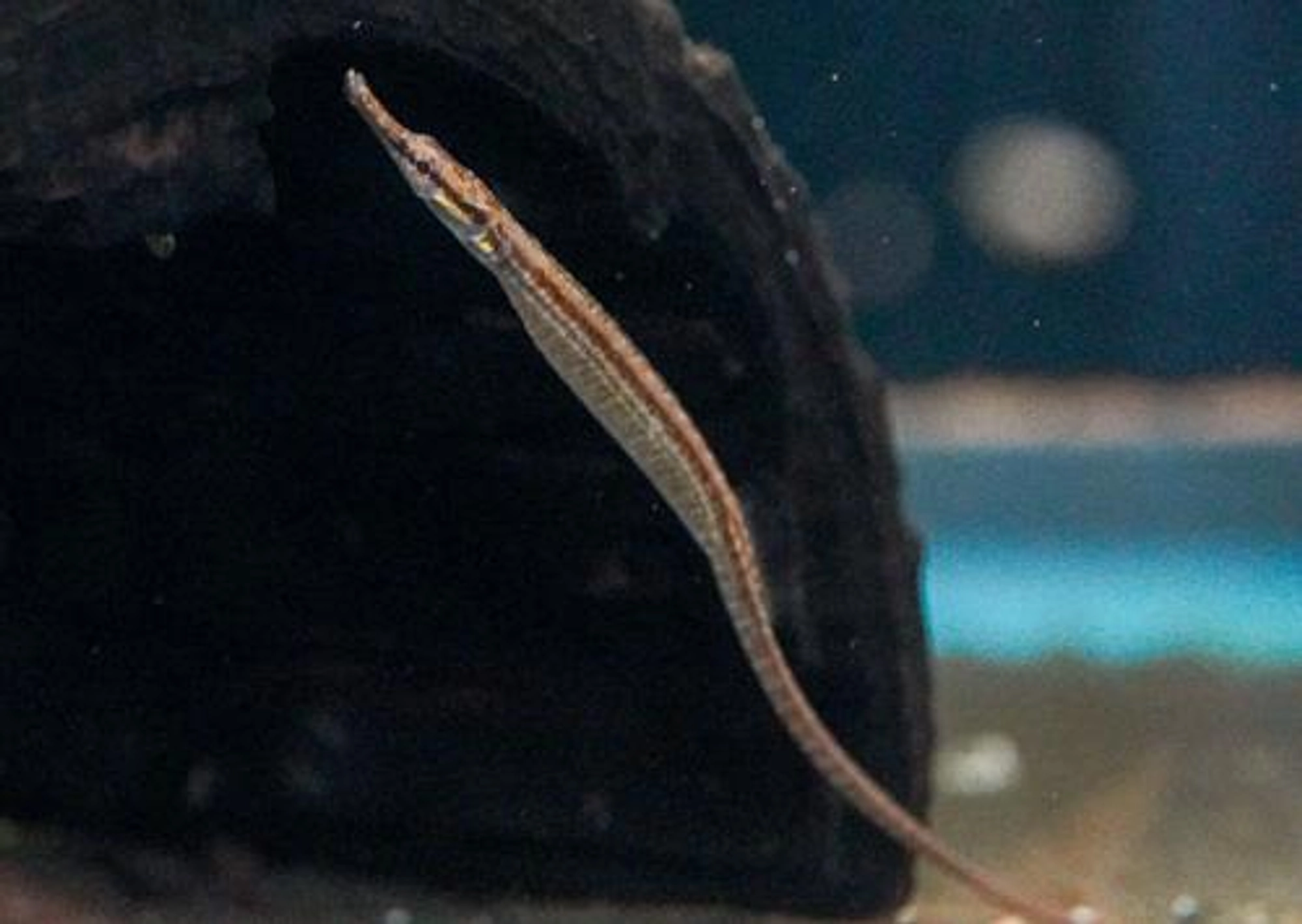

Product Details

Temperament
Peaceful
Discover the elegance of Doryichthys deokhatoides, the Freshwater Pipefish, perfect for your aquarium with its unique appearance and gentle nature.
Detailed Description:
Doryichthys deokhatoides, commonly known as the Freshwater Pipefish, is a fascinating addition to any aquarium. With its slender, elongated body and mesmerizing swimming style, this species brings a touch of the extraordinary to your aquatic environment. Native to the slow-moving waters of Southeast Asia, Doryichthys deokhatoides is a member of the Syngnathidae family, which also includes seahorses and other pipefish. Here’s an in-depth guide to caring for this unique and delicate species.
Water Conditions:
- Temperature: Freshwater Pipefish thrive in water temperatures between 75°F and 82°F (24°C to 28°C). Maintaining a stable temperature within this range is crucial for their health.
- pH Level: They prefer slightly acidic to neutral water, with a pH range of 6.5 to 7.5. Regularly monitor and adjust the pH levels to ensure optimal conditions.
- Hardness: The ideal water hardness for Doryichthys deokhatoides is between 5 and 12 dGH. Consistent water parameters help in preventing stress and promoting well-being.
- Filtration: Gentle filtration is recommended as they are not strong swimmers and can be easily stressed by strong currents. A sponge filter or a low-flow filter system works best.
- Water Quality: Clean water is vital. Regular water changes of 20-30% weekly are recommended to maintain high water quality and prevent the buildup of harmful substances.
Tank Setup:
- Tank Size: A minimum tank size of 20 gallons is recommended for a small group of Freshwater Pipefish. Larger tanks provide more stability and space for them to explore.
- Substrate: Fine sand or smooth gravel is ideal for the tank bottom. Avoid sharp substrates that could injure their delicate bodies.
- Plants and Decor: Provide plenty of live plants, such as Java moss, Anubias, and Vallisneria, to create hiding spots and mimic their natural habitat. Driftwood and smooth rocks can also be added for additional hiding places.
- Lighting: Moderate lighting is sufficient. Too bright lighting can stress them, while low lighting can make them feel more secure.
Tank Mates:
- Freshwater Pipefish are peaceful and should be housed with other gentle species. Ideal tank mates include small tetras, rasboras, and peaceful bottom-dwellers like Corydoras catfish.
- Avoid aggressive or fast-swimming fish that may outcompete them for food or stress them out.
- Shrimp and snails can also be good tank mates as long as they are not too small to be considered prey.
Feeding Habit:
- Freshwater Pipefish have specific dietary needs. They primarily feed on small live or frozen foods such as brine shrimp, daphnia, and mosquito larvae.
- Due to their small mouths and slow feeding habits, they may struggle with dry or pellet foods.
- Feed them small amounts multiple times a day to ensure they get enough nutrition, as they have high metabolic rates.
- Live foods are highly recommended to mimic their natural hunting behavior and keep them healthy and active.
Care and Maintenance:
- Regularly monitor water parameters to keep the environment stable and within the recommended ranges.
- Perform weekly water changes and clean the substrate to prevent the buildup of detritus and harmful bacteria.
- Observe their behavior and physical condition daily. Look for signs of stress or illness, such as lethargy, loss of appetite, or visible parasites.
- Quarantine any new fish before introducing them to the tank to prevent the spread of diseases.
- Handle them with care during tank maintenance, as their bodies are fragile and easily injured.
Breeding:
- Breeding Freshwater Pipefish in captivity is challenging but possible with the right conditions. Provide a heavily planted tank to encourage breeding behavior.
- Males carry the eggs in a brood pouch until they hatch. Ensure the male is well-fed during this period to support the development of the eggs.
- Once the fry are born, they can be fed with infusoria or newly hatched brine shrimp.
Doryichthys deokhatoides, with their unique appearance and gentle demeanor, can be a rewarding species for dedicated aquarists. With proper care and attention to their specific needs, they can thrive and bring a touch of the exotic to your freshwater aquarium.
Doryichthys deokhatoides 5 pcs
Product Options
5 pcs
Delivery
Quantity
Aquarium Fishes, Tanks & Supplies From The Fish House Yishun Chenchuru


 SG
SG



